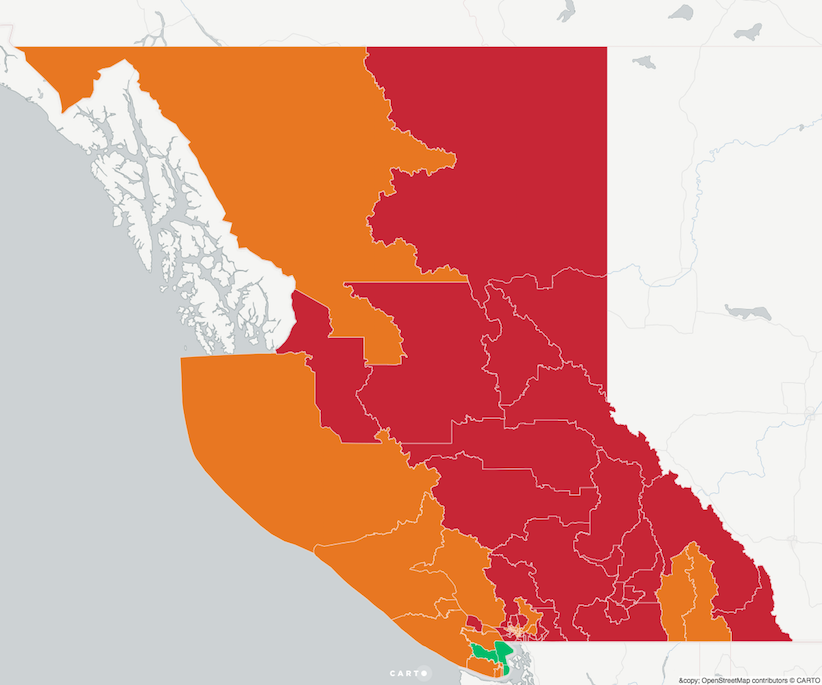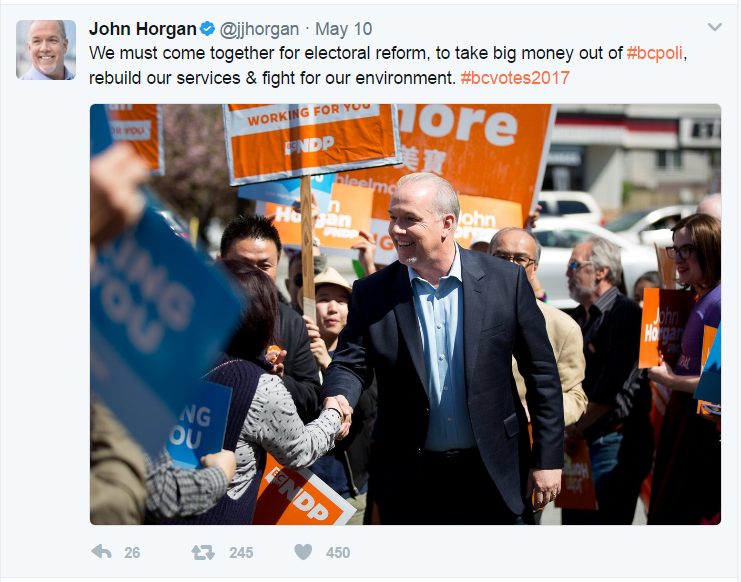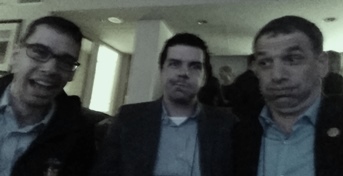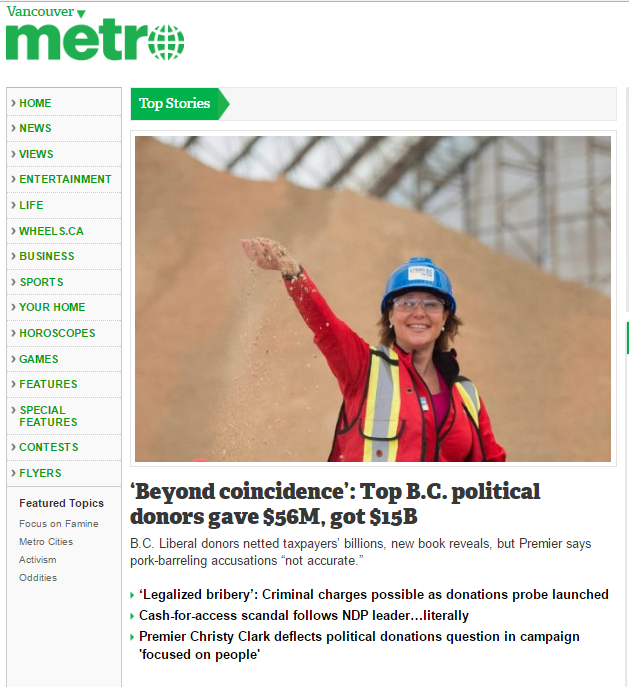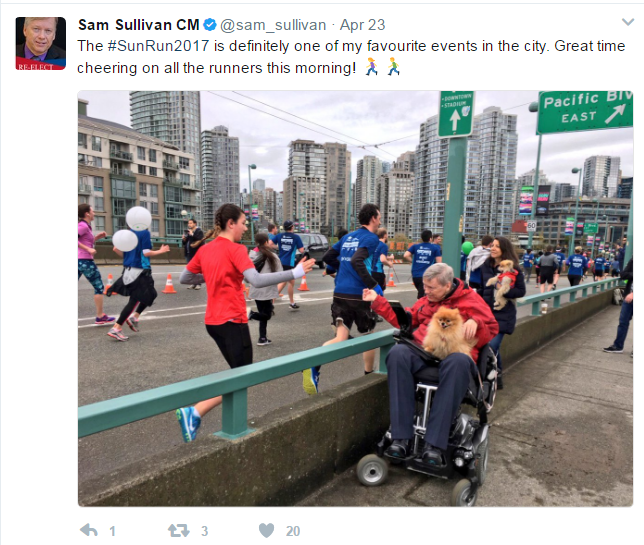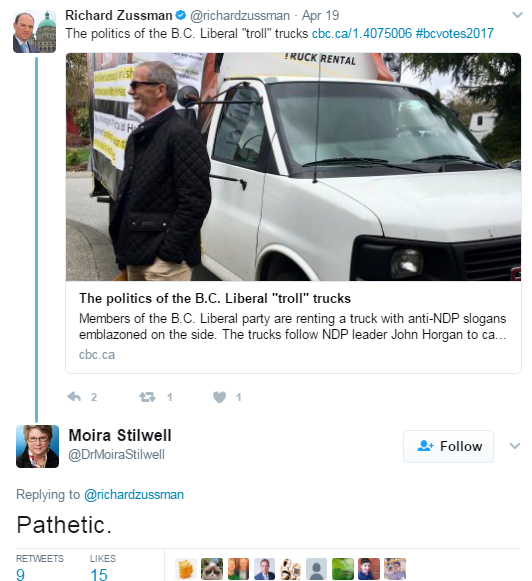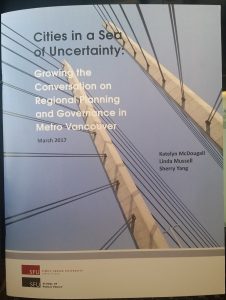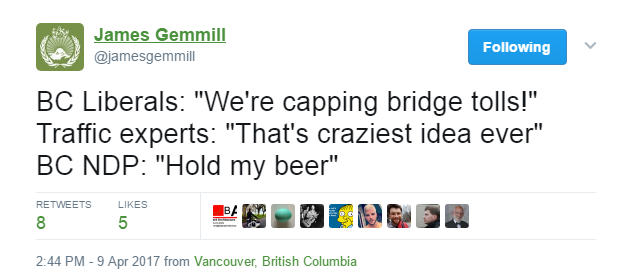The recounts are on and hopefully the brokering will soon pass the competing press conferences and social media channels stage. I am now wholly convinced none of the Provincial leaders read this blog, so I’m barging ahead with spitballing a few big ideas that would make for a better provincial government. After Electoral Reform and Climate Change, I now want to talk about our regionalism problem:
Idea 3: Ministry of Regional Unity
This election has, once again, perpetuated a Two Solitudes impression about British Columbia. Ridings that touch salt water almost all went NDP, those without tidewater almost all went Liberal (and those who can see the Saanich Peninsula went Green, but let’s put that aside for a bit).
As a person whose job it is to make a city in the Lower Mainland work better, I was pretty clear in my biases, so feel no need to extend my earlier gripe about Sam Sullivan into a wider one about how the BC Liberals seemed to not just ignore the Lower Mainland, but treat it with a bit of distain. Sometimes it seemed like policy decisions were made to specifically piss off the Urban Elites of Greater Vancouver. At the same time, John Horgan was criticized for not spending enough of the campaign North of 50, or reaching out to the recourse communities of the interior that used to be the NDP bread and butter.
Regardless of causes or coincidence, the idea of battling regions in a province as economically and physically tied together as BC does nothing to help advance anyone’s interests. Much of the economy of the Lower Mainland is tied to resource extraction, agriculture, and energy drawn from the interior, and almost every service the interior receives from government (health care, schools, roads, etc.) is heavily subsidized by the taxes of residents and businesses of the Lower Mainland. However, neither of those should be political fodder: the province is a confederation of interests that should work together to raise the quality of all of our lives.
So when a premier suggests that people in Prince George shouldn’t pay through their taxes for the Port Mann Bridge, it is an intentional attempt to drive a wedge between the regions. When Vancouver mentions that more people work in high tech industries in the Lower Mainland than all resource extraction in the interior, it similarly creates a category of “them” that leads inevitably to “othering” their problems. And don’t get me started on the whole topic of The Gateway.
This regional divide needs to be addressed as a potential to grow the province and get it working better, instead of a convenient political wedge to divide the province. People in Vancouver have to realize that gas and ore and timber and fruit from the interior are important to the provincial economy, and that people in the interior lack many of the services we take for granted – high-speed internet, reasonable access to healthcare, public transit. People in the interior need to understand that the lower mainland is the real economic driver of the province, and that making that economic machine work better through transportation investment or affordable housing actually helps pay for the services they do have access to.
I suggest we need someone from the provincial government to talk about the stresses that are specific to regions, and to work with the other ministries to help bring regional voices to the table and make the confederation work better. They could work with the local government organizations (LMLGA, SILGA, NCLGA, etc.) to bring their concerns to Government, and with the UBCM to balance needs. The name I’ve given it might be too Utopian for 21st century post-growth politics, but a person needs to do this job.
Perhaps more importantly, they can explain to the Premier why telling Millennials who cannot afford a place to live in Vancouver to “Move to Fort St. John” when that region has double the unemployment rate of Metro Vancouver may not make either place happy…
